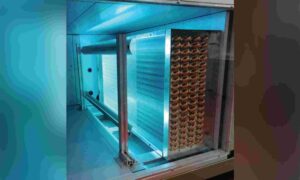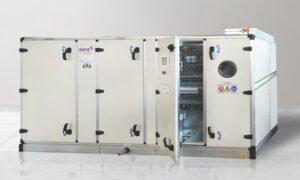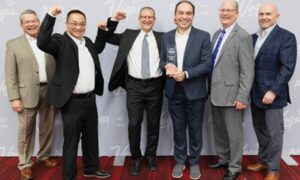The beauty of IoT is that it makes these inner workings now visible and manageable from an end-user perspective
Filters are often the “invisible workers”, within hidden ductwork, and pushing out invisible air. As the old saying goes; out of sight, out of mind. However, filters are critical, from operating cars, to equipment, to buildings, and industrial facilities. This is because its performances are symptomatic of other issues, whether it is performance of the ventilation system which has impact on the quality of the air, or impending equipment failure.
How IoT revolutionised the way we think about filtration
The beauty of IoT is that it makes these inner workings now visible and manageable from an end-user perspective. From a manufacturer’s perspective, we now have the ability to collect data on how our products are used, how frequently they are replaced, and even catalysing new business models as a result.
With IoT, we have moved from simply providing filters to delivering an intelligent HVAC filtration solution, enabling remote, real-time monitoring to achieve better efficiencies in energy consumption, maintenance and air quality in order to meet challenges of operating a HVAC system.
Sustainable for people as well as planet
This is especially important for the building sector, where 60 per cent of the energy consumption is from HVAC systems alone. In addition, 39 per cent of energy-related global greenhouse gas emissions are from buildings, based on a recent report by International Energy Agency. With the growing cooling demand in Asia, particularly Southeast Asia, reducing energy demand is crucial.
However, we do not want to simply reduce energy demand, at the risk of occupants’ health and wellbeing. One of the biggest irony of the green building movement in the past two decades was that in the pursuit of energy reduction, the industry traded off indoor air quality as a result. The good news is, the trend has been reversed with increasing awareness of air quality and its impact on health, and we see an opportunity for companies to differentiate themselves in terms of offering healthier buildings and workplaces, whether as an employer or as a building manager.
Common non-tech related challenges in IoT implementation
It has been the case that anything that has been “IoT-ed” will turn to gold, given the buzz. While true from the tech standpoint, 90 per cent of the hard work in IoT adoption for our clients is in fact non-tech related. Some of these challenges include:
• Adoption of new business models. For instance, the “as-a-Service” model, where we guarantee outcomes, rather than providing the product;
• Identification of the right stakeholders and decision makers for IoT-enabled solutions. As Internet meets the physical world, decisions typically made by two separate people are now made by a decision committee, or not made at all.
• Creation of new procurement processes, should the decision to procure an IoT solution is made.
And if you look at it from another perspective…
Through our journey of developing the IoT-enabled Intelligent HVAC Filtration, we gleaned a few key insights that could hopefully support the growth of the IoT ecosystem, from both expectation management of IoT solution providers, and also buyers.
Firstly, it might do us some good to collectively recognise that IoT is in fact incremental innovation; with practical, immediate and measureable benefits, and not a silver bullet to all of life’s problems. Secondly, go against the grain of having a long-term view on IoT implementation and not have a massive framework around which IoT solutions must integrate with other systems. One possible perspective is to see these IoT solutions as apps on your phone, rather than aiming for fully integrated platform. Lastly, moving away from the “teenage sex” syndrome, where everybody’s talking about it but nobody’s actually doing it!
Authored article by:
Jason Tang, Vice President, Intelligent Air Solutions Asia, MANN+HUMMEL
Cookie Consent
We use cookies to personalize your experience. By continuing to visit this website you agree to our Terms & Conditions, Privacy Policy and Cookie Policy.















